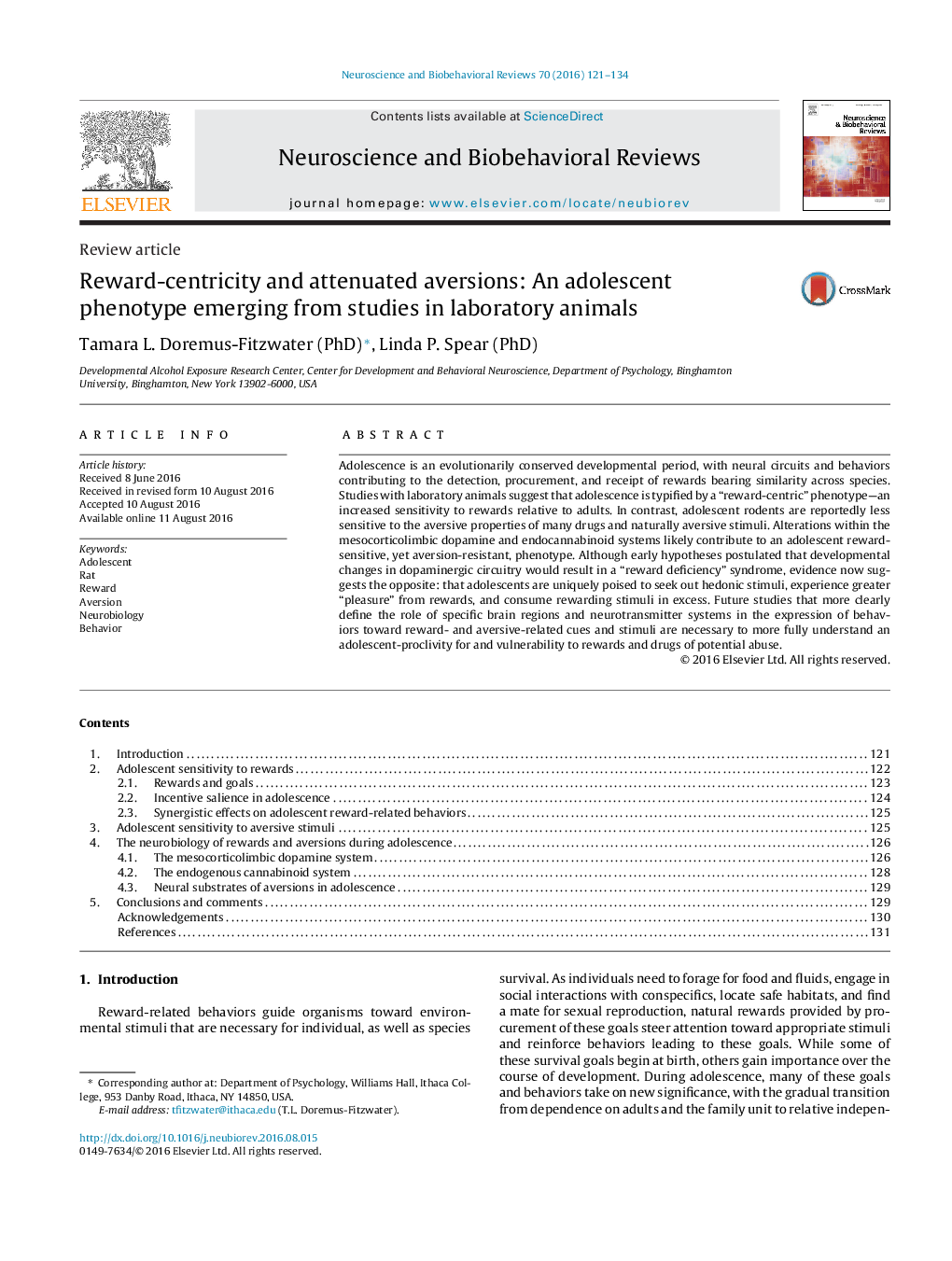| کد مقاله | کد نشریه | سال انتشار | مقاله انگلیسی | نسخه تمام متن |
|---|---|---|---|---|
| 5043591 | 1475300 | 2016 | 14 صفحه PDF | دانلود رایگان |
- Brain reward circuits and behaviors change similarly across species in adolescence.
- Data suggest adolescence is characterized by a heightened sensitivity to rewards.
- Conversely, adolescents exhibit attenuated sensitivity to many aversive stimuli.
- Mesocorticolimbic DA and endocannabinoid changes may contribute to these behaviors.
- Adolescent behaviors promote adaptive achievements, but also impart vulnerability.
Adolescence is an evolutionarily conserved developmental period, with neural circuits and behaviors contributing to the detection, procurement, and receipt of rewards bearing similarity across species. Studies with laboratory animals suggest that adolescence is typified by a “reward-centric” phenotype-an increased sensitivity to rewards relative to adults. In contrast, adolescent rodents are reportedly less sensitive to the aversive properties of many drugs and naturally aversive stimuli. Alterations within the mesocorticolimbic dopamine and endocannabinoid systems likely contribute to an adolescent reward-sensitive, yet aversion-resistant, phenotype. Although early hypotheses postulated that developmental changes in dopaminergic circuitry would result in a “reward deficiency” syndrome, evidence now suggests the opposite: that adolescents are uniquely poised to seek out hedonic stimuli, experience greater “pleasure” from rewards, and consume rewarding stimuli in excess. Future studies that more clearly define the role of specific brain regions and neurotransmitter systems in the expression of behaviors toward reward- and aversive-related cues and stimuli are necessary to more fully understand an adolescent-proclivity for and vulnerability to rewards and drugs of potential abuse.
Journal: Neuroscience & Biobehavioral Reviews - Volume 70, November 2016, Pages 121-134
